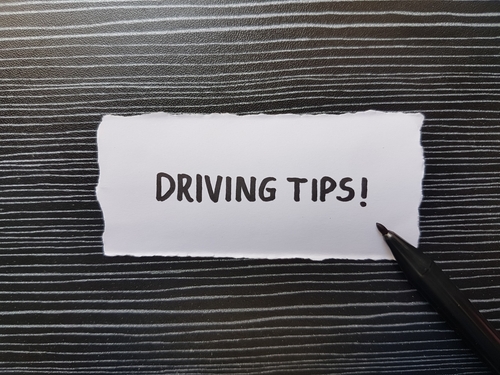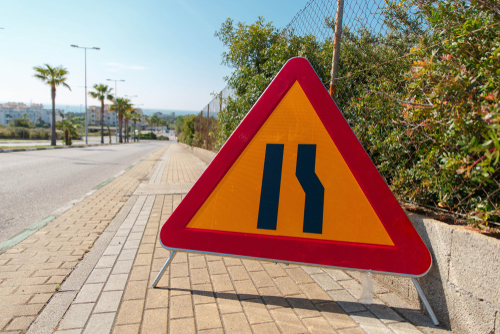Atlanta, the capital city of Georgia, is renowned for its vibrant culture, sprawling urban landscape, and, notably, its challenging road conditions. Driving in Atlanta is an experience that requires not only skill but also an understanding of the unique dynamics of its roads. The city’s highways and streets are:
- A hub of activity.
- Often bustling with a mix of commuters.
- Large commercial vehicles.
This mix results in a varied and sometimes unpredictable driving environment.
The traffic in Atlanta is infamous for its intensity. The city frequently ranks high in lists of U.S. cities with the worst traffic congestion. This congestion is primarily due to the city’s robust economy and population growth, leading to an increased number of vehicles on the road. The Interstate highways, particularly I-285, which encircles the city, and I-75/I-85, which cuts through its heart, are often congested, especially during peak hours. These highways, along with numerous other roads, form an intricate network that demands attentive and knowledgeable navigation.
Moreover, understanding the local driving culture and regulations in Atlanta is paramount for safe driving. The city’s driving culture can be characterized as fast-paced, with some drivers displaying aggressive behaviors such as speeding and sudden lane changes. Familiarity with local traffic laws, such as speed limits, right-of-way rules, and regulations regarding the use of mobile devices while driving, is crucial.
This knowledge not only ensures compliance with the law but also enhances safety on the road. For anyone new to driving in Atlanta or visitors from other places, taking the time to acquaint oneself with these aspects can make a significant difference in their driving experience.
Navigating Through Atlanta’s Traffic
Navigating Atlanta’s traffic requires a blend of strategic planning and adaptive driving skills. Patience and a defensive driving approach are key for those driving in heavy traffic conditions. It’s important to maintain a safe following distance, be vigilant of the actions of other drivers, and be prepared for sudden stops and shifts in traffic flow. These practices reduce the risk of accidents and contribute to a more orderly flow of traffic.
Understanding peak traffic hours is crucial for anyone looking to navigate through Atlanta efficiently. Typically, morning rush hour spans from 7:00 AM to 9:00 AM, and the evening rush hour from 4:00 PM to 7:00 PM. However, these times can vary, with traffic sometimes starting earlier or ending later. Avoiding these peak times can significantly reduce travel time and stress.
For those who must travel during these hours, it’s advisable to plan alternative routes. Utilizing side streets or lesser-known roads can often save time, though it’s important to be aware of potential bottlenecks in these areas as well.
Maintaining patience and focus is another crucial aspect of navigating through Atlanta’s traffic. Long periods of heavy traffic can be taxing and lead to frustration or road rage, which only exacerbates the situation. Strategies such as listening to calming music and audiobooks or engaging in breathing exercises can help maintain a calm demeanor. Staying focused on the road, avoiding distractions like mobile phones, and being aware of the surroundings can make the drive safer and more tolerable.
Weather-Related Driving Tips
Atlanta’s weather, while generally mild, can present a variety of challenges for drivers. The city experiences a range of weather conditions, including rain, fog, and, on rare occasions, ice. Being prepared for these conditions is crucial for safe driving. Regarding rain, Atlanta can experience heavy downpours, particularly during the summer months.
Drivers should ensure their windshield wipers are in good condition and that their tires have adequate tread depth to prevent hydroplaning. Slowing down and increasing following distances are key strategies in rainy conditions, as wet roads can significantly increase stopping distances.
Foggy conditions, though less common, pose a unique set of challenges. Reduced visibility requires drivers to use their low-beam headlights (not high beams, as these can reflect off the fog and worsen visibility), and to focus more intently on the road.
On the rare occasions when ice forms, particularly on bridges and overpasses, the risk of accidents increases. In these conditions, the best advice is to avoid driving if possible. If travel is necessary, go slowly, avoid sudden stops and starts, and keep a safe distance from other vehicles.
Vehicle maintenance plays a critical role in weather readiness. Regular checks of brakes, tires, headlights, and windshield wipers can ensure that your vehicle is prepared for adverse weather conditions. This not only enhances your safety but also the safety of others on the road.
Dealing with Atlanta’s Unique Road Features
Atlanta’s road network is complex and diverse, encompassing a wide array of highway systems and intersections. Navigating this network requires an understanding of its unique features. The city’s highways, such as the infamous Spaghetti Junction (Tom Moreland Interchange), where I-285 and I-85 meet, can be daunting due to their multiple lanes and heavy traffic. Keeping to the right unless overtaking, being prepared for lane changes well in advance, and using GPS navigation can help deal with these dangerous sections of these highways.
Traffic signals and road signs in Atlanta are designed to facilitate traffic flow and enhance safety. It’s essential to understand and respond appropriately to these signals. For instance, some intersections have dedicated turn signals, and it’s crucial to follow these to avoid collisions. Similarly, understanding the meaning of different road signs, such as those indicating no entry, speed limits, or pedestrian crossings, is vital for safe navigation.
In both urban and suburban areas of Atlanta, drivers should be vigilant for pedestrians, cyclists, and scooters. Urban areas often have more foot traffic and tighter streets, requiring a slower speed and increased awareness. In suburban areas, where roads might be wider and speeds higher, it’s still important to look out for children playing or people walking dogs.
Seat Belt Use and Avoiding Distractions
An essential aspect of safe driving, often overlooked, is the consistent use of seat belts and the avoidance of distractions. In Atlanta, as in all of Georgia, wearing a seat belt is not just a safety recommendation; it’s a legal requirement. Seat belts significantly reduce the risk of injury or death in the event of an accident. They are designed to protect you by keeping you in place, and their effectiveness is well-documented in countless studies. Every occupant of the vehicle should buckle up, regardless of their seating position. This simple action can be the difference between life and death in a crash.
Distracted driving is another critical issue on Atlanta’s roads. Distractions can come in many forms: mobile phones, other electronic devices, eating, or even interacting with other passengers. However, the use of mobile phones while driving has become particularly problematic in recent years. In response to this, Georgia has implemented the Hands-Free Law, which prohibits drivers from holding a phone or using any part of their body to support the phone while driving.
Under this law, drivers can only use their phones to make or receive calls by using a speakerphone, earpiece, wireless headphones, or if the phone is connected to the vehicle or an electronic watch. Texting, browsing the internet, and using apps are strictly prohibited while driving.
This law underscores the importance of keeping your full attention on the road. Even a momentary distraction can lead to a serious accident, especially in a city with traffic conditions like Atlanta. Drivers are encouraged to set up their GPS route before starting their journey, to avoid the temptation of using their phone while on the move. If a call or text is urgent, it’s advised to pull over safely before using the phone.
Incorporating these practices into your driving routine — consistently wearing a seat belt and avoiding distractions, especially mobile phone usage — significantly enhances your safety and that of others on the road. By adhering to these guidelines and Georgia’s Hands-Free Law, drivers contribute to a safer driving environment in Atlanta.
Staying Safe on Atlanta Roads
Safe driving in Atlanta requires an awareness of its unique driving conditions, from bustling urban streets to complex highway systems and the various weather conditions that can arise. Key tips include staying prepared for weather changes, understanding and responding correctly to traffic signals and signs, and maintaining your vehicle to ensure its suited for Atlanta’s diverse driving environment.
Staying safe also involves being vigilant and respectful of other road users, whether they are fellow drivers, pedestrians, or cyclists. Remember, safety on the road is a shared responsibility.
For those seeking more information on safe driving in Atlanta, numerous resources are available, including the Georgia Department of Transportation’s website and local driving schools that offer courses on defensive driving. By adhering to these tips and remaining informed, you can contribute to making Atlanta’s roads safer for everyone.
Contact Our Atlanta Car Accident Attorney
If you or a loved one have been harmed in a motor vehicle accident in Atlanta, you need an experienced Atlanta auto accident attorney who can assist you during this emotional and stressful time. With over a decade of experience, Shani O. Brooks P.C. is ready to help. contact our Atlanta personal injury law firm at (404) 920-4736 to learn more about your legal options.







